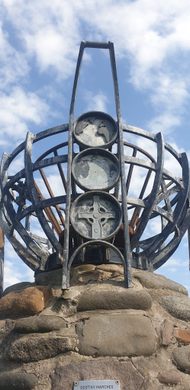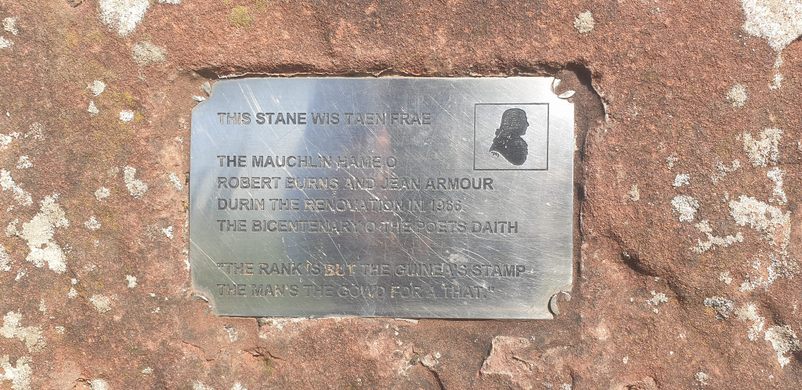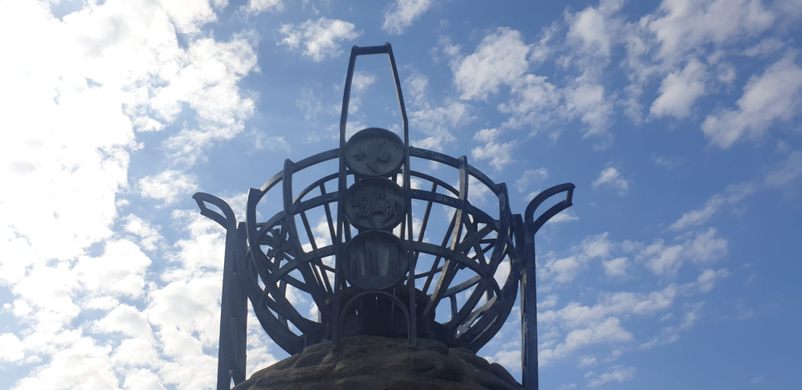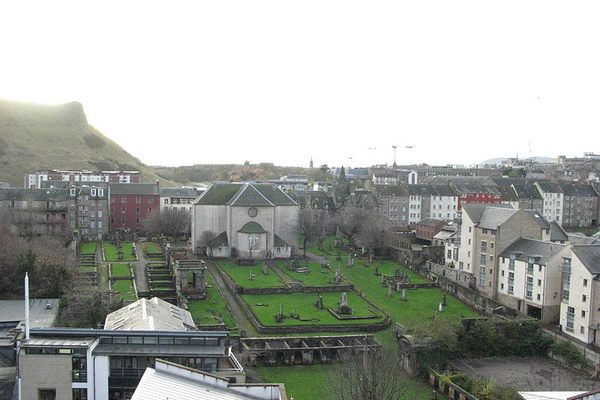AO Edited
Monument to the Scottish Parliament
A stone monument acknowledging Scotland's right to have a separate Parliament from the one in Westminster.
Edinburgh is one of six World Heritage sites in Scotland. It was given this prestigious UNESCO honor in 1995, due to its historic New and Old Town districts. Every day, hundreds of tourists, as well as many locals, clamber up to Calton Hill to catch a glimpse of both these majestic award-winning sites.
Once one has caught their breath, after climbing a series of strenuous stairs, the viewer is given another breathtaking vista. From this vantage point, they are treated to a number of stunning structures. To the southwest is Edinburgh Castle, the aforementioned Old Town skyline, the Balmoral Hotel, the Dugald Stewart Monument with Princes Street sprawled below. To the north is the New Town with the Firth of Forth lying just beyond. Then on the southeastern slope there is the Nelson Monument, and the unfinished National Monument of Scotland, (fondly referred to as Scotland’s Folly or Edinburgh’s Disgrace) with Arthur’s Seat and Salisbury Crags of Holyrood Park forming a stunning backdrop.
Carrying on from here to the bottom of the mound, a place where few people venture is a structure compiled of various stones with something that resembles a metal basket. Upon reading the attached plaque the viewer will gather a better understanding of what it is that they are looking at.
“This cairn was built by the keepers of the Vigil for a Scottish Parliament. The Vigil was kept at the foot of this road. It began on the night of the 10th April 1992 as news broke of the fourth consecutive Conservative General Election victory. It ended 1980 days later. The previous day, 11th September 1997, Scotland voted “Yes, Yes” for her own Parliament. Erected by Democracy for Scotland, 10th April 1998.”
Though Scotland did not gain its independence from English rule it did achieve the ability for self-rule. A spokesperson for Democracy for Scotland, Stuart McHardy, has been quoted as saying: ”The idea of the cairn was that the vigil needed something which is as Scottish as we all are, it will serve as a permanent marker for the future. A cairn is a Scottish word referred to as a man-made mound of rocks or monument to signify a burial or other memorial.
Besides the dedication to celebrate the one-year anniversary of this monumental event, there are several other stones commemorating other events from around the globe. There is a rock from Auschwitz, Poland, remembering a Scottish Missionary, as well as a stone from Robert the Bruce’s Castle in Dumfries and Galloway to indicate Scotland’s continuous struggle for independence. There are several other stones that pay tribute to various other causes, each with its own plaque.



























Follow us on Twitter to get the latest on the world's hidden wonders.
Like us on Facebook to get the latest on the world's hidden wonders.
Follow us on Twitter Like us on Facebook